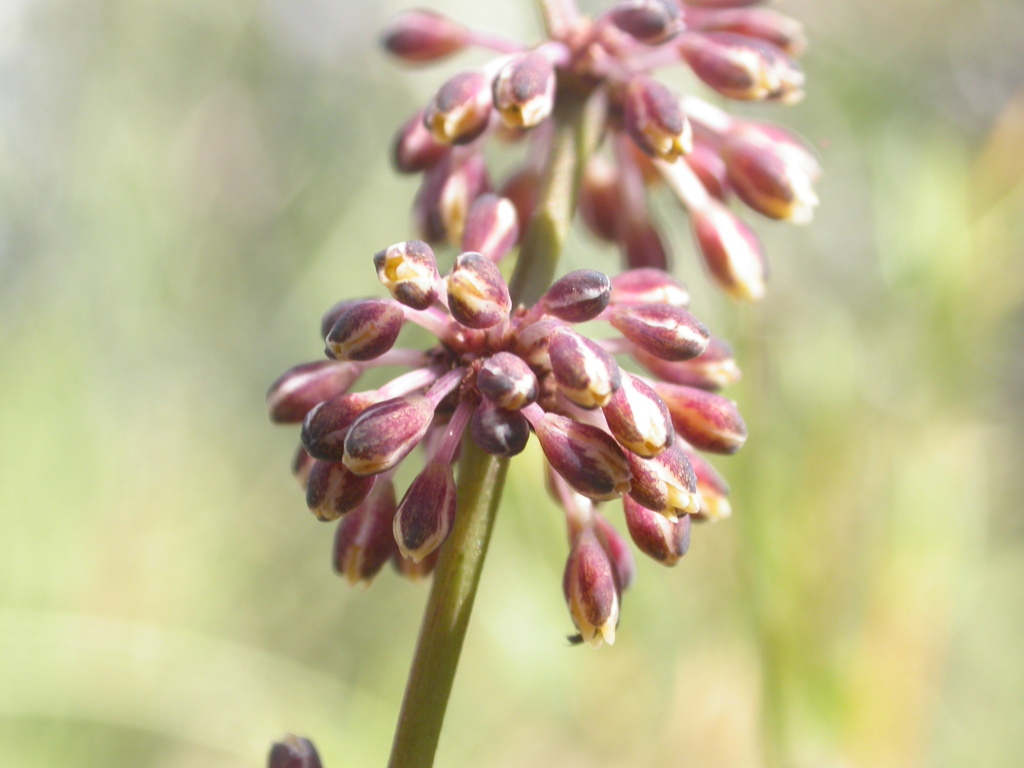Lomandra multiflora subsp. multiflora
Many-flowered Mat-rushTussocks slender to robust. Leaves flat or slightly concavo-convex in cross-section, occasionally plano-convex, rarely terete, 25-90 cm long, 1.5-4.5 mm wide, smooth or scabrid on abaxial surface, green, greyish green or rarely glaucous; basal sheath gradually tapering distally, intact or shortly torn, white, purplish or brown; apex entire. Male and female inflorescences similar, branched or unbranched, branches whorled, usually from one- to three-quarters as long as the leaves, flower clusters whorled; non-flowering axis exposed for (l-)2-9 cm, laterally flattened; flower-bearing axis (3.5-)5.5-l5.8 cm long. Bracts at the base of each cluster of flowers longer to much longer than the flowers, pungent, straw-coloured to whitish. Male flowers campanulate, 2.5-3.5 mm long; female flowers c. 4.5 mm long, larger than male flowers and sessile; outer perianth purplish; inner perianth thicker than outer perianth, yellow. Many-flowered Mat-rush. Flowers (May–) Sep.–Nov.(–Dec).
LoM, Wim, GleP, VVP, VRiv, MuF, GipP, OtP, WaP, Gold, CVU, GGr, DunT, NIS, EGL, EGU, HSF, HNF, OtR, Strz, MonT, HFE, VAlp. Widespread in sandy soils or stony areas in heathlands and open forest.
Lee &: Macfarlane (in Bedford et al. 1986) recognize two subspecies, with only subsp. multiflora occurring in Victoria. Subsp. dura has ± sessile male flowers or, if pedicellate, the pedicels are short (rarely to 2 mm long) and usually concealed by bracts. In subsp. multiflora, the pedicels of the male flowers are usually 3–8 mm long and always distinctly exceeding the bracts at anthesis.
Conn, B.J. (1994). Xanthorrhoeaceae. In: Walsh, N.G.; Entwisle, T.J., Flora of Victoria Vol. 2, Ferns and Allied Plants, Conifers and Monocotyledons, pp. 720–734. Inkata Press, Melbourne.
 Spinning
Spinning


